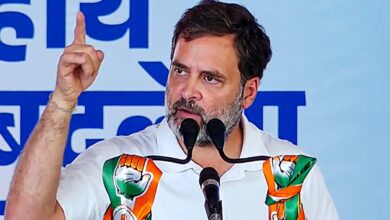During the presentation of the interim budget for 2024-25, Finance Minister Nirmala Sitharaman unveiled significant announcements. It not only lays the foundation for housing policies but also propels India towards a future marked by robust infrastructure and economic growth. The strategic initiatives outlined in the budget, coupled with the focus on capex, position the housing and commercial real estate sectors for sustained expansion, promising positive implications for the broader economy.
Union Budget 24 gives hope to homebuyers
The budget announced a housing scheme aimed at supporting the middle class in realizing the dream of home ownership. The government’s commitment to construct close to 2 crore more homes under the Pradhan Mantri Awas Yojana (PMAY) rural scheme is a strategic move expected to give a substantial push to the ambitious “Housing for All” agenda.
Pradeep Aggarwal, Founder & Chairman, Signature Global (India) Ltd. says, “Finance Minister underscored the governments recognition of the significance of homeownership. In a notable announcement, the FM stated a housing scheme would announce soon targeting the middle class, extending to those residing in rented houses with the aim of facilitating the construction or purchase of their own homes. This initiative is expected to revitalize the Mid housing & Affordable housing sector. Moreover, with the economic scenario improving and the average real income of individuals witnessing a 50% increase, optimistic expectations abound for the real estate sector to thrive across all segments. An additional favorable development is the governments unwavering focus on infrastructure development, reflected in the 11.1% increase in the outlay for infrastructure. The governments ambitious goal of transforming India into a Viksit Bharat by 2047 is poised to create a conducive environment for the expansion of the overall economy and the real estate sector as well.”
Industry estimates suggest that India’s middle class is on the cusp of remarkable growth, nearly doubling to constitute 61% of the total population by 2047, a significant rise from 31% in 2020-21. The housing for the middle-class scheme aligns with the government’s vision to meet the evolving needs of this burgeoning demographic. This soon-to-be-launched housing scheme holds particular promise for the middle class, offering a financial boost that empowers individuals within this income category to either build or purchase their homes.
Santosh Agarwal, Executive Director and CFO, Alphacorp says, “We applaud the governments forward-thinking approach outlined in the interim Union Budget for 2024-25, signifying a dedication to fostering comprehensive development through the middle-class housing scheme. The governments commitment is evident in the successful construction of 30 million houses under the PMAY-Rural scheme, coupled with plans for an additional 20 million in the next five years to meet the escalating demand for housing. The substantial 66% increase in allocation, totaling â¹79,000 crore for FY24, for the Pradhan Mantri Awas Yojana scheme underscores the governments emphasis on urban and affordable housing.”
Aman Sharma, Founder and Managing Director, Aarize says, “We appreciate the governments commitment to inclusive development, which is particularly evident in the housing scheme for the middle class. The plan to construct an additional 20 million homes in the next five years under the PMAY-Rural scheme reflects their concerted effort to address the surging demand for housing. Furthermore, the government is focusing on developing infrastructure by expanding ongoing airport projects and strategically developing new ones to improve connectivity across cities, especially non-metros. These announcements made in the budget reflect the governments forward-looking approach to contribute significantly to the nations growth.”
Another key driver propelling economic growth is the government’s steadfast commitment to enhancing infrastructure and connectivity nationwide. In the short-to-medium term, Tier-II and Tier-III cities are anticipated to experience heightened economic activity, courtesy of these concerted efforts. India’s infrastructure industry had been eagerly awaiting a comprehensive plan and timeline for bolstering infrastructure in the country, and the Interim Budget delivered on these expectations. The continued focus on capital expenditure (capex) at around 3.4% of GDP emerges as a catalyst for economic activity, aligning with the long-term vision of a ‘Viksit Bharat’ (Developed India).
Abhishek Trehan, Executive Director, Trehan Iris says, “The Union Budget 24 focuses on infrastructure development, women empowerment, youth, farmers, and marginalized sections of society which is the governments future-ready approach towards inclusive development and aims to make India one of the strongest economies in the world. The continuous emphasis on the countrys infrastructural development signals the governments focus on fostering economic growth exponentially. We appreciate the impetus given to infrastructure and improving connectivity quotients in the budget. This will also propel the growth of the realty sector across residential and commercial – -retail segments in metros and non-metros. It will have a positive impact on the real estate sector across cities, opening up new growth opportunities. The governments vision of the Housing for All initiative got an additional boost in the budget with the announcement of constructing 20 million new houses under PMAY rural. This will enable the middle-class section to fulfill their dreams of having a home and a better livelihood.“
The infusion of funds into infrastructure development is poised to have a cascading effect on various sectors, with the commercial real estate market standing out as a key beneficiary.
Santosh Agarwal adds, “The governments proactive stance extends to the infrastructure sector with the ongoing expansion of existing airports and the strategic development of new ones will progress efficiently. This forward-looking initiative is designed to enhance connectivity for tier 2 and tier 3 cities, with a goal of establishing 149 new airports. By aligning our endeavors with the governments vision, we aim to contribute in the growth of the country.”
The Modi governments focus on Governance, Development, and Performance (GDP) formed the core of her speech, underlining a commitment to sustaining a healthy inflation metric. The budget placed significant emphasis on key sectors, notably green energy, technology, railways, infrastructure, and tourism, reflecting a comprehensive approach towards fostering national growth and progress.




